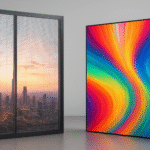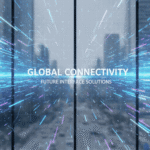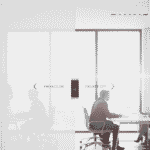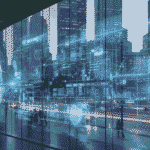In the ever-evolving landscape of technology, the integration of switchable glass with the Internet of Things (IoT) has opened up a realm of possibilities, transforming the way we perceive and interact with glass surfaces. From residential spaces to commercial buildings and even the automotive industry, the marriage of switchable glass and IoT is reshaping our world in unprecedented ways.
Brief Overview of Switchable Glass
Switchable glass, also known as smart glass, is a revolutionary technology that allows the transparency of glass to be altered at the touch of a button. This innovation has found applications in various sectors, providing a dynamic solution for privacy, energy efficiency, and aesthetics.
The Intersection of Switchable glass and IoT
The convergence of switchable glass and the Internet of Things has introduced a new paradigm where glass becomes an intelligent interface. Through interconnected devices, users can control and monitor the properties of smart glass, adding a layer of functionality that goes beyond traditional glass applications.
Advantages of Switchable Glass in IoT
Energy Efficiency
The dynamic control of light transmission in this convertible glass contributes significantly to energy savings. By optimizing natural light utilization and reducing the need for artificial lighting, this intelligent glass aligns with sustainable practices in both residential and commercial applications.
Privacy and Security
Internet of Things integration allows users to control the opacity of this convertible glass, enhancing privacy at the touch of a button. This feature is invaluable in both residential and commercial settings, providing a customizable level of privacy while maintaining a connection to the outside world.
Enhanced Aesthetics
The ability to transform the appearance of glass surfaces introduces a new dimension of design possibilities. Architects and designers can create dynamic and interactive spaces, fostering creativity and innovation in both interior and exterior applications.
Applications of IoT with Switchable Glass

Smart Homes
In smart homes, this interchangeable glass enhances privacy and energy efficiency. It can be seamlessly integrated into windows, doors, and partitions, providing homeowners with unprecedented control over their living spaces through IoT devices.
Commercial Buildings
This Convertible glass finds extensive use in commercial structures, offering a dynamic solution for conference rooms, offices, storefronts, and retail environments. The ability to transform the transparency of glass surfaces enhances both aesthetics and functionality, with Internet of Things connectivity enabling centralized control.
Automotive Industry
The automotive sector embraces this intelligent glass for sunroofs and windows. With the integration of IoT, drivers can adjust the tint and transparency of the glass, optimizing comfort, safety, and the overall driving experience.
Healthcare Sector
In healthcare facilities, this convertible glass contributes to patient privacy and comfort. Smart glass partitions and windows can be controlled through IoT devices to create adaptable spaces that cater to specific patient needs, ensuring a conducive healing environment.
Retail Environments
Retail spaces leverage this convertible glass for interactive displays, creating engaging and customizable shopping experiences. The integration with IoT allows for real-time updates, personalized interactions, and enhanced visual merchandising.
Hospitality Sector
Hotels and resorts use this intelligent glass in room dividers and windows, providing guests with control over privacy and ambience. Internet of Things connectivity enhances the overall guest experience by offering personalized settings for lighting, transparency, and climate control.
Challenges and Solutions
Cost Concerns
While the implementation of switchable glass and Internet of Things technologies may pose initial costs, the long-term benefits, including energy savings and increased efficiency, often outweigh the initial investment. Continuous advancements in technology are also driving down costs over time.
Technical Issues
Challenges such as maintenance and compatibility are actively addressed through ongoing research and development. Regular updates in software and firmware ensure the reliability and longevity of smart glass systems, minimizing technical issues.
Environmental Impact
The production and disposal of electronic components in this intelligent glass raise environmental concerns. Manufacturers are proactively exploring sustainable materials and recycling methods.
Future Prospects
Technological Advancements
Ongoing research is focused on improving the efficiency and functionality of Smart glass. Innovations in materials and manufacturing processes aim to enhance the user experience, making Smart glass more versatile and accessible.
Market Growth
As awareness of the benefits of Smart glass and IoT integration spreads, the market is poised for significant growth. Increased demand across various industries, coupled with advancements in technology, is driving a robust and competitive market for this type of intelligent glass solution.
The Role of IoT in Switchable Glass Evolution

Connectivity and Automation
IoT devices enable seamless communication between switchable glass and other smart systems. This connectivity allows for automated adjustments based on user preferences and environmental conditions, creating a more intuitive and responsive user experience.
User-Friendly Interfaces
Intuitive interfaces and mobile applications make it easy for users to interact with and control this intelligent glass. Through user-friendly interfaces, individuals can manage transparency levels, lighting, and other features, enhancing the integration of this exchangeable glass into daily life.
Consumer Adoption and Trends
Growing Popularity
Increasing awareness and affordability are driving consumer adoption of Smart glass technologies. The ability to create smart and energy-efficient spaces is appealing to homeowners and businesses alike, contributing to the growing popularity of this intelligent glass.
Market Predictions
Analysts project sustained growth in the Smart glass market. This growth is fueled by technological advancements, increased demand for smart solutions, and a growing emphasis on sustainable and energy-efficient building practices.
Conclusion
The article summarizes the transformative journey of switchable glass and IoT integration. It underscores the limitless possibilities from energy-efficient homes to smart offices and futuristic automotive innovations. The conclusion emphasizes the role of technology in addressing challenges, focusing on sustainability, and propelling IoT-enabled switchable glass into a cornerstone in the architecture and design of the future.
FAQs
Which industries commonly use switchable glass and IoT integration?
Switchable glass and IoT integration commonly finds applications in smart homes, commercial buildings, the automotive industry, healthcare facilities, retail environments, and the hospitality sector.
What are the advantages of using Smart glass in terms of energy efficiency?
Smart glass contributes significantly to energy savings by dynamically controlling light transmission. This optimizes natural light utilization and reduces the need for artificial lighting in both residential and commercial applications.
What primary challenges does the implementation of switchable glass and IoT technologies face?
The primary challenges include initial costs, technical issues such as maintenance and compatibility, and environmental concerns regarding the production and disposal of electronic components. Ongoing research and development address these challenges.
How does IoT contribute to the evolution of switchable glass?
Internet of Things enables seamless communication between switchable glass and other smart systems, allowing for automated adjustments based on user preferences and environmental conditions. User-friendly interfaces and mobile applications enhance the overall user experience and facilitate easy control of Smart glass.
What applications does Smart glass have in the healthcare sector?
Smart glass enhances patient privacy and comfort in healthcare facilities by using smart glass partitions and windows. Internet of Things-controlled glass actively creates adaptable spaces customized to specific patient needs.





